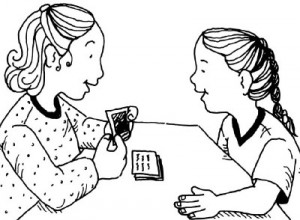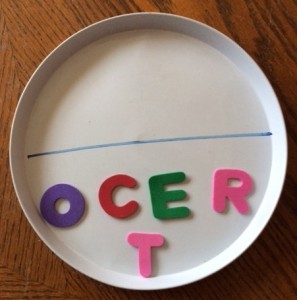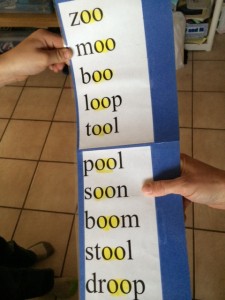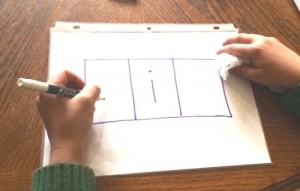How many things can you successfully manage at one time? For years I thought I was fantastic at “multi-tasking”. I still find myself with many irons in the fire but my thoughts on “multi-tasking” have changed.
I know that when I stretch myself to handle too many things at once, everything suffers. I find that I’ve made mistakes or short-changed something (or someone) when I haven’t given myself completely to one thing at a time. When I focus on a single task, my final product (or the relationship I’ve slowed down to fully enjoy) is superior and more fulfilling than tasks I complete (even if it’s coffee with a friend) while thinking about other things on my to-do list.
I found the need to focus on one thing at a time to be important for children mentally wrestling with their learning, too. When I work with a child who is learning to read, I want them focused on reading strategies. When a child has to stop and think about sounds a letter (or letter combination) makes or struggle to “remember” sight words, their reading is slow and labored. In “teacher talk” this quick recall of fundamental skills is called automaticity. Automaticity frees a child’s mind to focus on one thing at a time. Automaticity in early literacy Really Does Matter.
Automaticity refers to the ability to recognize or do things quickly without thought. It is an automatic response pattern or habit. It is the result of learning, repetition, and practice – ergo one of my favorite sayings about the learning process, “Practice makes permanent.” Automaticity can refer to any automatic response (my morning routine after 20 years of adult life, a pitcher’s windup, a gymnast’s approach, a pianist’s posture, my grandfather’s shoe polishing routine) as well as fundamental skills in the classroom.
While I do believe that a child needs to know short vowel and consonant sounds and a good number of sight words as quickly as possible when beginning to read, I do not believe there is a single method to learning sounds and words. Nor do I believe there is a “correct” sequence in which sounds or words have to be introduced. Ultimately, it is a quick recall that frees the brain to concentrate on fewer things at a time.
While I could share many activities I tried in the classroom, the following stick out as some of the most helpful for building automaticity in learning sounds. I make no claims to having “created” much of what I used in my instructional career. These were “stolen” from peers along the way and are certainly meant to be shared!
1) Draw a line – Give your child a magnetic board (a stove-top burner cover or a cookie sheet), a dry erase marker, and 3-4 magnetic letters. Have your child draw a line from left to right in the middle of the board and have them place their letters below the line. Call the letter names (initially) in a given order and have your child find then push the letters above the line in the order you called. Name the letters in a different sequence and have your child find and push the letters below the line (in the correct sequence). Move on to letter sounds (using the same letters but calling the sounds rather than the letter names). Add a challenge by adding to the number of letters you use. Side note – make sure you move quickly to lower case letters. Not only are you working on automaticity but you’re working on short term memory as well.
2) Thumb wars – Create lists of same vowel CVC (short consonant, vowel, consonant) words on cardstock. Focusing on one short vowel sound at a time frees the brain for attention to consonant mastery. Challenge your child to gain speed in visually recognizing a change in the initial and final consonants of CVC words. Have him keep track (with his thumb beside each word) of words read without an error. Hold (with your thumb) the spot where he mis-read a word and challenge him to “beat” his record on subsequent readings. This is a sneaky way to provide repeated readings J. Move onto long vowel spelling (in my picture below) you’re your child is ready.
3) Ready, set, write – Along the same lines as “thumb wars,” I love teaching sounds through writing. Have your child use “sound boxes” in a plastic sheet protector. While focusing initially on each short vowel sound individually, offer lots of CVC words to have your child write quickly and erase. Remove the set vowel in the middle when your child is ready to fluently discriminate between the short vowel sounds. Move on to words with 4 sounds, consonant blends and clusters, and long vowel spellings when your child is ready.
How did you help (are you helping) your child with automaticity of early literacy skills? Please join the conversation by replying at the top of this post.
Before you leave the site, why not follow my blog (top, right of this post)? It’s quick and easy
For more from Marea, check out Me and Thee Studios’ faith based leveled readers for 1st-2nd graders at http://www.meandtheestudios.com/early-reader-collection.html.






